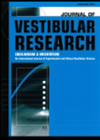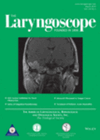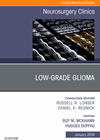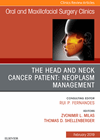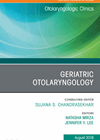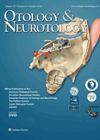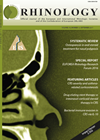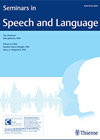
Journal Reviews archive for 2019
Consequences of Meniere’s Tumarkin crises
Many will be familiar with reports of frightening drop attacks without loss of consciousness experienced by some Meniere’s disease (MD) patients. This study analysed data from an electronic survey of over 600 members of a national Meniere’s society. The aim...
Does Tranexamic acid reduce intraoperative bleeding during FESS?
Intraoperative bleeding during FESS can reduce visibility and obscure important landmarks. This can result in longer operative times, increase risks of complications and even lead to incomplete surgery. Tranexamic acid is a drug which prevents fibrinolysis and stabilises blood clots....
Three-dimensional endoscopy for sinonasal procedures: is it really better?
In this interesting study the authors looked at the efficacy of two-dimensional (2D) versus 3D high-definition endoscopes in novice users, not those already trained in 2D. Ninety-two medical students used 2D and 3D endoscopes to complete two validated tasks and...
Peripheral nerve reconstruction using cell-enhanced acellular nerve grafts
Autologous nerve grafts are the current gold standard for peripheral nerve reconstruction. This systematic review analyses the role of cell-enhanced acellular nerve (ANA) grafts on the regeneration of peripheral nerve injuries. Several studies have been published to examine alternatives to...
DVT prophylaxis in cranial procedures
Deep vein thrombosis (DVT) is a result of disturbed balances in blood flow patterns, blood clotting factors promoting coagulation and vessel wall endothelial injury. The subsequent disruption of coagulation and fibrinolysis mechanisms lead to venous clot formation and propagation. The...
Perioperative management of the head and neck cancer patient
The perioperative care of patients with head and neck cancer is complex and requires significant preoperative planning and patient education. The issues include analgesia, antibiotics, stoma and wound care, general and chest physiotherapy, thromboprophylaxis and nutrition. This article provides a...
Assessment and management of dysphagia in the elderly
This article covers dysphagia in older patients, which is an important topic due to an ageing population, and a relatively common symptom that we see in clinic. Dysphagia could be due to presbyphagia secondary to changes in head and neck...
How to tackle the problem of ciprofloxacin-resistant ear infections?
The growing issue of ciprofloxacin-resistant ear organisms is certainly a pertinent one. The situation here in the UK, where ototoxic topical drops are frequently given initially in the presence of pus and a perforation, differs markedly from elsewhere where fluoroquinolones...
Sinonasal inverting papilloma: who is at risk of recurrence?
This study from a tertiary sinus surgery unit, describes some useful information in the follow-up of sinonasal inverted papilloma patients - in particular those likely to recur - and discusses the optimal staging systems to use to attempt to predict...
Predicting CSF leaks pre FESS: Gera classification - a new tool?
An interesting study from Italy looking at an anterior skull base classification that may be useful in predicting risk of intraoperative CSF leak during FESS surgery. Traditionally we have used the Keros classification system, developed in 1962 to categorise olfactory...
Dispelling the myths around stuttering and bilingualism
There are many myths around language development in bilingual children, and an increased risk of stuttering in bilingual children is one of these misperceptions. In research studies, speech and language therapists have identified higher numbers of dysfluencies in speech samples...
Stuttering and bullying - everyone’s business
This article emphasises that bullying (distinct from teasing- the former being defined as repeated actions intended as harmful, compared to good-natured interactions enjoyed by everyone) is an issue that can impact significantly on a child or young person’s ability to...

